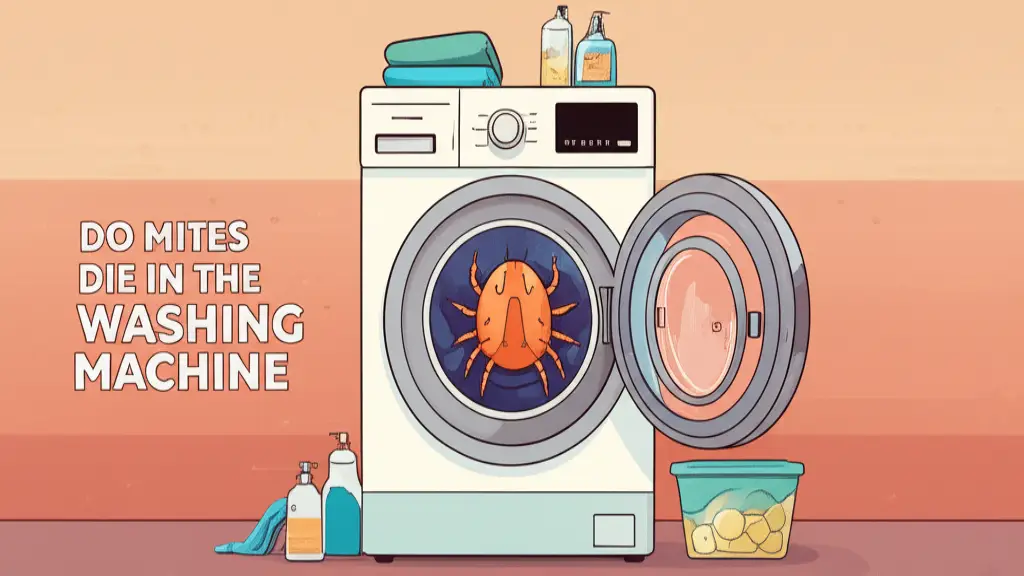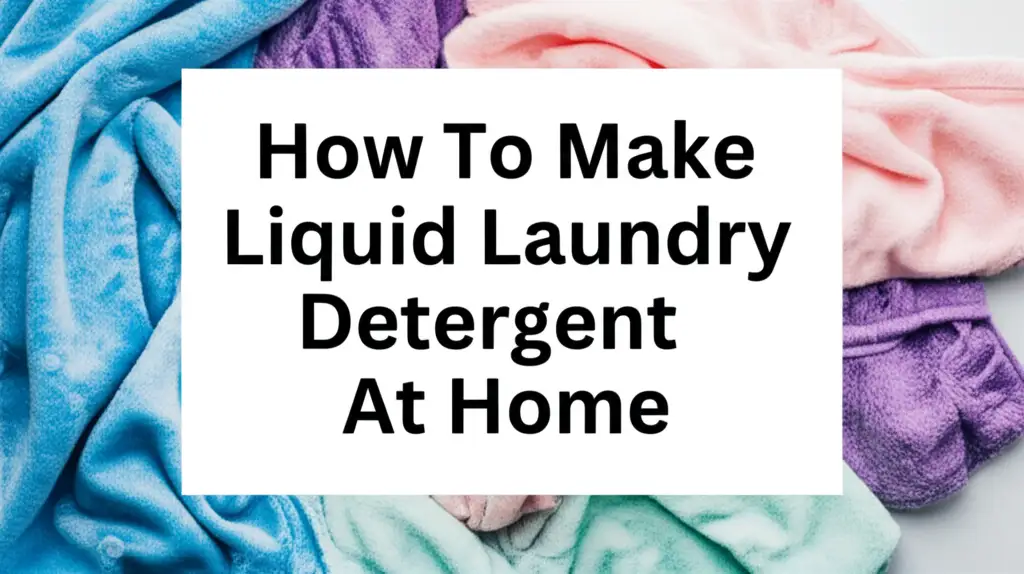· Davia Murnell · Home Care · 16 min read
Do Mites Die In The Washing Machine

Do Mites Die in the Washing Machine? Find Out Here
You might often wonder if your laundry routine truly eliminates those unseen microscopic invaders. We talk about mites, especially dust mites, often found lurking in our bedding, carpets, and upholstery. It’s a common concern for many of us, particularly if allergies or asthma affect our household members. The idea of washing away these tiny creatures feels reassuring.
This article explores a crucial question: Do mites die in the washing machine? We will examine the effectiveness of different washing temperatures, detergents, and drying methods in tackling these pests. We will also look at how you can optimize your laundry practices for maximum mite removal. Understanding these steps helps create a cleaner, healthier living space. This guide provides clear answers and actionable advice to help you keep your home mite-free.
Takeaway
- Hot Water is Key: Use water temperatures of at least 130°F (54°C) to effectively kill dust mites and eliminate their allergens in the washing machine.
- Drying is Crucial: High heat in the dryer for at least 15-20 minutes after washing ensures complete mite eradication.
- Regular Washing: Wash bedding, pillowcases, and other mite-prone items weekly to control populations.
- Consider Cold Water: While less effective alone, cold water washes can remove some allergens. Combine with hot drying for better results.
- Maintain Machine Cleanliness: Keep your washing machine clean to ensure optimal performance and hygiene.
The washing machine can effectively kill mites, especially dust mites, when proper methods are used. High water temperatures and hot drying cycles are the most effective means to eliminate these microscopic pests and their allergenic proteins from fabrics. Cold water washing removes some allergens but does not kill mites as reliably.
Understanding Dust Mites: Tiny Invaders of Your Home
Dust mites are minuscule arachnids, close relatives of spiders and ticks. These creatures are too small for us to see with our bare eyes. They thrive in warm, humid environments, making our homes perfect living spaces for them. Your bed, pillows, and upholstered furniture offer ideal conditions for mites to multiply. These areas provide the warmth and moisture they need to survive.
Dust mites do not bite humans, unlike some other pests. Instead, they feed on dead skin cells that we shed naturally every day. This food source is abundant in our homes, contributing to their rapid growth. Millions of dust mites can live in just one mattress, a sobering thought. Their presence becomes an issue because of their droppings and body fragments. These particles contain proteins that act as powerful allergens for many people.
Common symptoms of dust mite allergies include sneezing, runny nose, itchy eyes, and skin rashes. For individuals with asthma, exposure to dust mite allergens can trigger severe attacks. Managing dust mite populations is important for health. This is why understanding effective cleaning methods, including how your washing machine helps, is crucial. My goal is to help you reduce these allergens in your home environment.
We share our homes with dust mites, whether we like it or not. They are a natural part of indoor ecosystems. However, controlling their numbers is within our power. Regular cleaning and smart laundry habits make a big difference. These steps can significantly improve indoor air quality and reduce allergy symptoms. This includes targeting the places where mites gather most.
The Washing Machine’s Role in Mite Elimination
Your washing machine is a powerful tool in the fight against dust mites. It removes mites and their allergens from fabrics. The combination of water, detergent, and agitation works to dislodge and wash away these tiny pests. However, not all wash cycles are equally effective. The success depends largely on the water temperature you choose.
Cold water washes can rinse away some mite allergens. They are less effective at killing the mites themselves. Mites are resilient creatures; cold water does not harm them enough. They can survive a cold wash cycle, clinging to fabric fibers. This means that while some allergens may decrease, the mite population may still persist. For true eradication, more aggressive measures are necessary.
Hot water is the critical factor for killing dust mites. Water temperatures of 130°F (54°C) or higher kill dust mites on contact. This heat denatures the proteins in their bodies, ending their lives. This temperature also breaks down the allergenic proteins in their droppings. So, a hot wash does double duty. It kills the mites and renders their allergens harmless.
For items that can withstand high heat, a hot wash cycle is the best choice. This includes bedding, towels, and some clothing. Always check care labels before using hot water. Some delicate fabrics may shrink or get damaged at high temperatures. Combining a hot wash with a thorough hot dry cycle provides the most effective mite control. We rely on the washing machine to cleanse our items. Knowing how to use it best for mite control helps us maintain a healthier home.
Hot Water: The Ultimate Weapon Against Mites
When you want to truly eliminate dust mites, hot water is your best friend. Research confirms that water temperatures of at least 130°F (54°C) are fatal to dust mites. This temperature is hot enough to kill them outright. It also helps to denature the proteins in their feces and body parts, which are the main triggers for allergies. Using hot water in your washing machine provides a sanitizing effect.
To achieve maximum mite destruction, wash all mite-prone items in hot water. This includes pillowcases, sheets, duvet covers, and even some blankets. Aim for a wash cycle that maintains this high temperature for at least 10 minutes. Most modern washing machines have a “sanitize” or “allergen” cycle. These cycles are specifically designed to reach and maintain the necessary temperature. If your machine does not have such a setting, simply choose the hottest water option available.
I make sure to wash my family’s bedding weekly using the hottest water setting. This regular habit significantly reduces the dust mite population in our sleeping areas. It also helps alleviate allergy symptoms for my partner, who is sensitive to dust mites. Remember to always check the fabric care labels before using hot water. Some delicate materials might not withstand high temperatures. You can consult specific guides on how to properly wash different items, such as how to bleach pillows in washing machine or even can i put cat bed in washing machine, which are often mite hot spots.
For items that cannot be washed in hot water, like some upholstered items or certain types of pillows, other methods might be necessary. Freezing can kill mites, but it is less practical for large items. You might need to explore options for killing dust mites in places like a sofa, which is beyond the scope of washing machines. Always ensure your washing machine itself is clean. A dirty machine can harbor bacteria and affect cleaning effectiveness. Learn how to clean your washing machine inside for best results. Hot water is a simple yet very effective tool in your mite elimination arsenal.
Cold Water Washing: Is It Effective for Mites?
Many people prefer washing clothes in cold water to save energy or protect delicate fabrics. The question arises: Is cold water washing effective against dust mites? The short answer is, not entirely. While cold water can rinse away some dust mite allergens, it generally does not kill the mites themselves. Dust mites are quite resilient creatures. They can easily survive the cold temperatures of a typical cold water wash cycle.
When you wash items in cold water, you might reduce the amount of mite droppings and body fragments. These are the primary allergens. So, a cold wash can offer some relief for allergy sufferers by simply removing these particles. However, the living mites often remain embedded in the fabric fibers. They can continue to multiply and produce more allergens once the items are dry. This means that the problem is only partially addressed.
For truly effective mite control, especially for individuals with severe allergies, cold water alone is insufficient. If you must wash items in cold water due to fabric care instructions, couple it with a high-heat drying cycle. The heat from the dryer is often enough to kill any surviving mites. This combination can offer a more comprehensive solution than cold water washing alone. My personal preference remains hot water for anything that can tolerate it.
Consider items like children’s plush toys or certain delicate blankets. These often require a cold wash. After washing, I put them in the dryer on a hot setting for at least 20 minutes. This method ensures any remaining mites are killed by the heat. It provides peace of mind that allergens are minimized. Always remember to check care labels. Understanding your washing machine’s features can help you optimize cycles for both fabric care and mite control. While cold water saves energy and protects clothes, it needs a hot companion to truly conquer mites.
Drying Cycles: Finishing Off Mites with Heat
After a thorough wash, especially a hot water cycle, the drying process plays an equally critical role in mite elimination. High heat in the dryer is extremely effective at killing any remaining dust mites and further denaturing their allergens. Even if a few mites survive the wash, they are unlikely to withstand the intense heat of a dryer. This step acts as a powerful finishing blow.
For optimal mite destruction, set your dryer to the highest heat setting that your fabric can tolerate. Items like bedding, towels, and some clothing will benefit from high heat for at least 15-20 minutes. This duration ensures that the core temperature of the fabric reaches lethal levels for the mites. The continuous tumbling and hot air create an inhospitable environment, completely dehydrating and killing them.
I always make sure to dry my sheets and blankets on the ” sanitize” or “high heat” setting. This guarantees that they come out not just clean, but also free of any lingering mites. It is important to avoid overloading the dryer. Overloading can prevent proper air circulation and heat distribution. This means some areas of the fabric might not reach the necessary temperature to kill all mites. Give your items enough space to tumble freely.
If you wash items in cold water, using a hot dryer cycle becomes even more crucial. As discussed, cold water alone may not kill mites. The high heat from the dryer becomes the primary method for eradication in such cases. This two-step approach ensures that you effectively remove allergens and eliminate the mites themselves. For items that cannot go into the dryer, like some delicate fabrics, other methods such as air-drying in direct sunlight (UV light can help) or professional cleaning might be necessary. Keeping your dryer clean, just like your washing machine, helps in this process. You can learn how to clean your washing machine drum to ensure overall laundry hygiene.
Beyond the Wash: Comprehensive Mite Control Strategies
While the washing machine is a powerful tool, it is only one part of a comprehensive mite control strategy. Dust mites live in many areas beyond your laundry. To truly minimize their presence and reduce allergy symptoms, you need to address other parts of your home. This approach creates a less inviting environment for these microscopic creatures. It helps improve overall air quality in your living space.
First, focus on your bedding. We spend a significant portion of our lives in bed, making it a primary habitat for dust mites. In addition to washing sheets and pillowcases weekly in hot water, consider using allergen-proof covers. These covers encase your mattress, pillows, and duvet. They create a barrier that prevents mites from entering or escaping. This traps existing mites and limits new infestations. I find these covers make a noticeable difference in my own allergy symptoms.
Next, address carpets and upholstered furniture. These items offer a vast surface area and deep fibers for mites to inhabit. Regular vacuuming with a HEPA-filter vacuum cleaner helps remove mites and their allergens. I vacuum my carpets and upholstery at least once or twice a week. Steam cleaning carpets periodically can also kill mites with high heat. For items like sofas, where mites thrive, you might need to use specific treatments. You can learn how to kill dust mites in sofa for specialized advice.
Humidity control is another vital aspect. Dust mites thrive in high humidity. Aim to keep your indoor humidity levels below 50%. Using a dehumidifier, especially in damp areas like basements or bedrooms, can make your home less hospitable for mites. Good ventilation also helps reduce humidity. Open windows when weather permits or use exhaust fans. Keeping a clean washing machine helps as well, as a dirty machine can contribute to dampness and odor issues in your laundry room. Learn how to clean a smelly washing machine for preventative maintenance.
Finally, declutter your home. Less clutter means fewer places for dust to accumulate. Dust is food for mites. Regularly damp-dusting surfaces helps remove this food source. Wash curtains and blinds regularly, or opt for easy-to-clean blinds. These combined efforts create a much cleaner and healthier living environment.
Maintaining a Mite-Free Home Environment
Achieving and maintaining a mite-free home environment requires consistent effort. It is not just about washing fabrics; it is about creating an inhospitable space for dust mites. Regular cleaning practices across your entire home will make a big difference. This includes areas you might not initially consider as mite hot spots. The goal is to reduce their food sources and control humidity.
First, think about the items that are difficult to wash. Many decorative pillows or throws cannot go through a hot wash. For these, consider placing them in a plastic bag and freezing them for at least 24 hours. The extreme cold will kill the mites. After freezing, shake or vacuum the items to remove dead mites and allergens. This method is effective for smaller, non-washable items. My family sometimes uses this trick for beloved stuffed animals.
Regular cleaning of your washing machine also contributes to overall home hygiene. A machine that is clean operates more efficiently. It also ensures your “mite-killing” hot washes are truly effective. Residue from detergents, fabric softeners, and even mold can build up in your machine. This buildup affects its performance and can re-deposit dirt onto your laundry. Learn how to clean your washing machine with vinegar for a simple, effective cleaning method. Regular deep cleaning, perhaps once a month, is advisable.
Consider your flooring. Hardwood, tile, or laminate floors are better for mite control than wall-to-wall carpeting. They are easier to clean and do not trap allergens as readily as carpets do. If you have carpets, ensure they are vacuumed often. Using rugs that can be washed frequently in hot water is a good alternative. This lets you apply the same high-heat cleaning principles as with bedding.
Finally, improving air circulation helps. Stuffy, humid rooms are a haven for dust mites. Use exhaust fans in bathrooms and kitchens. Consider using an air purifier with a HEPA filter in your bedroom. This helps remove airborne allergens, including mite particles. By combining these strategies, you create a robust defense against dust mites. It leads to a healthier and more comfortable home for everyone.
FAQ Section
How hot does water need to be to kill dust mites in the washing machine?
Water needs to be at least 130°F (54°C) to effectively kill dust mites. This temperature also denatures the allergenic proteins from their droppings. Many washing machines have a “sanitize” or “allergen” cycle that reaches this temperature. Always choose the hottest setting your fabrics can safely withstand for best results.
Can cold water washing kill dust mites?
No, cold water washing generally does not kill dust mites. While it can rinse away some of their allergens, the mites themselves can survive cold temperatures. For complete eradication, follow a cold wash with a high-heat drying cycle to kill any remaining mites.
Is drying enough to kill dust mites if I wash in cold water?
Yes, drying clothes on a high heat setting for at least 15-20 minutes can effectively kill dust mites, even if you washed them in cold water. The intense heat of the dryer dehydrates and destroys the mites. This makes the dryer a crucial step in mite control, especially for delicate items.
How often should I wash bedding to control dust mites?
You should wash bedding, including sheets, pillowcases, and duvet covers, weekly in hot water to control dust mite populations. This regular washing schedule significantly reduces the number of mites and their allergens in your sleeping environment, providing continuous relief.
What other steps can I take to reduce dust mites in my home?
Beyond washing, use allergen-proof covers on mattresses and pillows. Vacuum carpets and upholstered furniture regularly with a HEPA-filter vacuum. Maintain indoor humidity below 50% using a dehumidifier. Dust surfaces with a damp cloth and declutter your home to reduce mite habitats.
Can all fabrics be washed in hot water to kill mites?
No, not all fabrics can withstand hot water. Always check the care labels on your items before washing. Delicate materials like silk, wool, or certain synthetics may shrink or get damaged by high temperatures. For these items, use cold water and rely on the dryer’s high heat, or explore alternative mite control methods.
Conclusion
Tackling the unseen world of dust mites in your home might seem daunting, but your washing machine is a powerful ally. We have explored how effective laundry practices can significantly reduce these microscopic pests. The key takeaway is clear: Do mites die in the washing machine? Yes, they do, especially when you use hot water and high-heat drying. This dual approach proves most effective in eliminating mites and their troublesome allergens.
Remember that water temperatures of at least 130°F (54°C) are crucial for killing mites. For items that cannot withstand high heat, the dryer’s high-heat cycle offers a vital secondary defense. Regularly washing your bedding and other mite-prone items is a simple yet impactful step towards a healthier living environment. Beyond the laundry, controlling humidity, vacuuming, and using allergen-proof covers provide a comprehensive defense.
By integrating these strategies into your routine, you can create a home that is less hospitable to dust mites. This will lead to fewer allergy symptoms and a cleaner, more comfortable space for everyone. Make these laundry and cleaning practices a consistent part of your home care. Your health and comfort will benefit greatly from a mite-reduced home. Start making these simple changes today for a breath of fresh air.
- dust mites
- washing machine
- mite control
- laundry care
- allergy relief
- home hygiene
- pest elimination
- hot water wash





